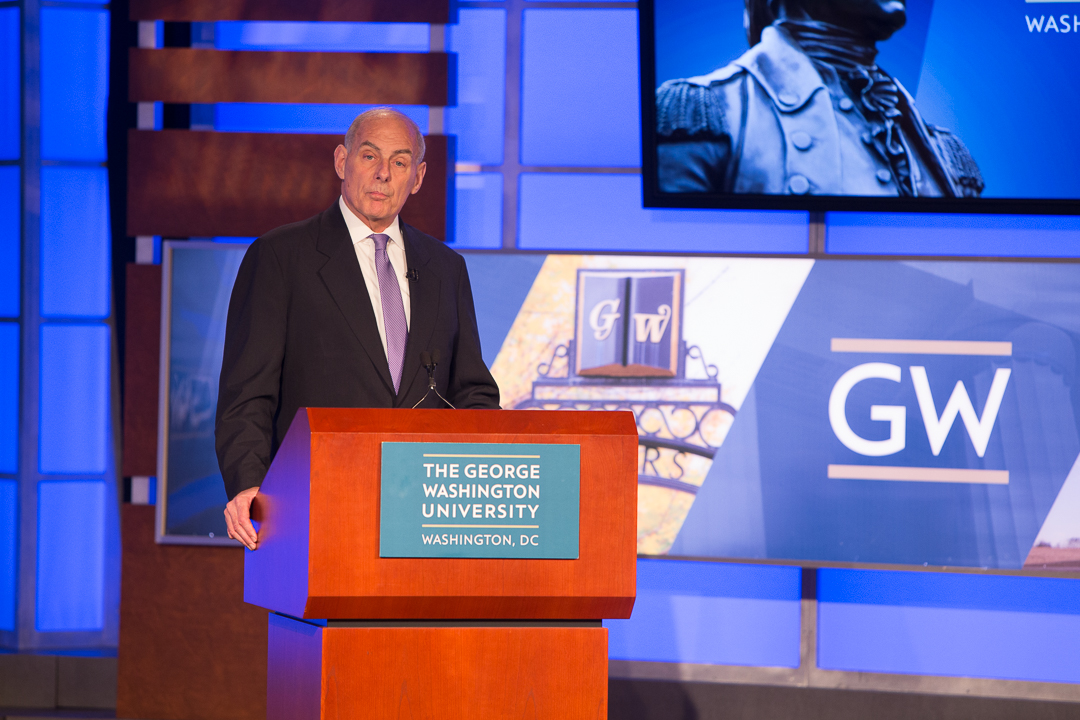By Kristen Mitchell
The public should see themselves as part of the security web that ensures safe air and rail travel across the United States, said David Pekoske, head of the Transportation Security Administration.
“Security is a collective effort, and it takes all of us to secure the homeland,” he said. “We have to think more strategically and make the most of our resources.”
Mr. Pekoske, who started in his role as TSA administrator in August, rolled out a new strategy for the governmental agency during a “State of TSA” address delivered at George Washington University’s Jack Morton Auditorium on Wednesday. The TSA manages transportation security and works with industry to set guidelines and best practices for ground travel.
Terrorists continue to look to airports and transportation hubs as potential targets. It’s imperative to understand those activities and the important role TSA agents play in keeping the public safe, said Frank Cilluffo, director of the GW Center for Cyber and Homeland Security, before introducing Mr. Pekoske.
“Transportation security is front and center of all of our minds, not just today but always,” Mr. Cilluffo said. “The threat continues to morph and adapt and change, the terrorists continue to change their tactics, techniques and procedures.”
The United States faces “ambitious adversaries” who will strike at any opportunity. It is the TSA’s job to deny them these opportunities, Mr. Pekoske said.
His priorities for 2018 include strengthening frontline operations, improving performance in core security operations, seeking out innovations and acquiring technology quickly, and investing in hiring, training, developing and retaining a professional workforce to make TSA an attractive employer.
The TSA was created in the aftermath of the terrorist attacks on Sept. 11, 2001, to prevent similar attacks in the future. Today the agency screens two million travelers in the United States every day. It is difficult to celebrate success when success means that something didn’t happen, Mr. Pekoske said, but the agency must remain vigilant.
“We know our adversaries, those who want to do us all harm, are continuously evolving their tactics. We need to reflect on this,” he said. “When our adversaries evolve, they concede that we have been successful today, and they demonstrate that they have not given up on attacking us tomorrow.”
Threats have evolved beyond elaborate plots designed by established terrorist groups over the past 17 years. Security professionals are confronted by a current of lone wolves radicalized over the Internet, who use less sophisticated, low-tech methods to target Americans.
The agency is focusing more on the public areas before security checkpoints that could be targeted by bad actors. It must concentrate on the threats today and stay ahead of the ones it will face tomorrow, Mr. Pekoske said.
The agency wants to partner more with the private sector and speed up the acquisition process of new technology. TSA is currently testing technology that will give agents a 3-D view into carry-on bags at security checkpoints, versus the two-dimensional view they currently have. The 3-D technology already is used for checked bags, but the size and weight of the machines has until recently limited their use elsewhere.
Mr. Pekoske honored several TSA agents for heroic actions in the past year. He applauded Ricardo Perez, an agent who took swift action in identifying a suspicious, smoking bag at the Orlando International Airport. The agent put his own safety at risk, quickly moving it away from the security checkpoint to minimize damage.
He also acknowledged two TSA agents who saved lives during the January 2017 shooting at the Fort Lauderdale–Hollywood International Airport. One was an off-duty agent from Alaska who acted quickly to save lives while waiting for a flight home after vacation. The other was an on-duty agent who ushered more than 100 people to safety after hearing gunshots while performing routine bag inspections.



